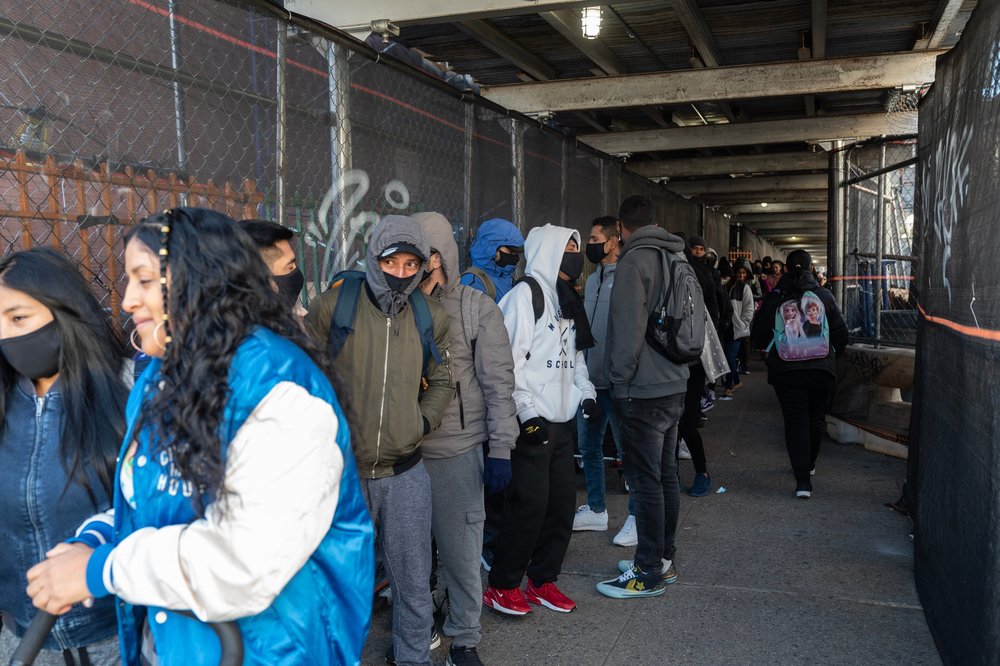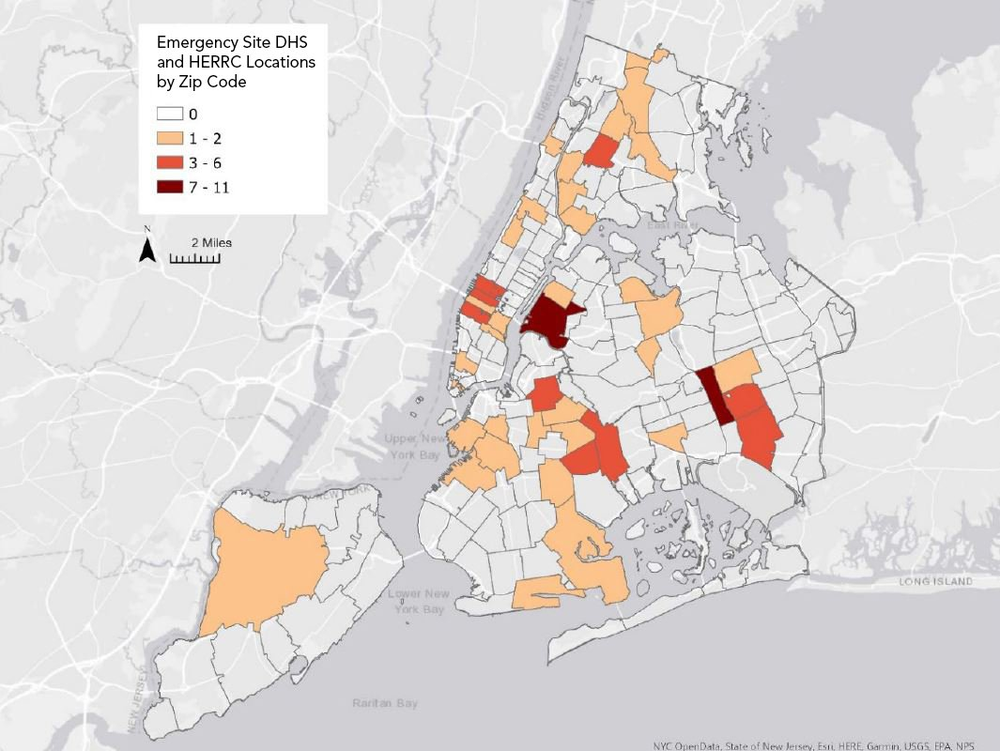Speaker Adams calls out ‘inequity’ in locating shelters during NYC migrant influx
March 14, 2023, 9:01 a.m.
Long Island City, Hell's Kitchen, and neighborhoods in southeastern Queens and the central Bronx have the highest concentrations of new shelters.

There’s a lack of equity in the placement of city shelters, resulting in some communities taking on far more than their fair share of facilities serving homeless people, City Council Speaker Adrienne Adams said during a committee hearing on Monday.
“We understand that now there is an extreme crisis,” she said during a General Welfare committee budget hearing, adding that her community in Southeast Queens has historically taken on a disproportionate share of shelters. “But we were here (in crisis) before we got here.”
She added: “The same communities that were inundated before the asylum seekers began to come in are the same communities that are now being triply and more than inundated with obstacles without the appropriate resources."
The city's homeless shelter population has grown by about 60% since last year, when elected officials from Texas began busing migrants to New York City and other cities. Those migrants now make up about a third of shelter residents. To accommodate the influx, the city has opened 96 emergency homeless shelters since April, and seven separate emergency centers specifically for migrants. On Monday evening, Mayor Eric Adams announced two new facilities — called Humanitarian Emergency Response and Relief Centers — will open in Bushwick and Midtown.
Over 31,000 newly arrived migrants are currently staying in city-run facilities.
ZIP codes in southeast Queens and Long Island City have the highest concentration of city-run homeless shelters and migrant centers, each accommodating seven to 11 sites, according to an analysis released last week by the city comptroller. Clusters of three to six shelters can be found in Brownsville, Hell’s Kitchen and the central Bronx.

Some of the neighborhoods with the highest concentrations of new shelters were hotspots for homeless shelters even last summer, according to a report from The City. The report found that city shelters remained unequally distributed across the city and “disproportionately concentrated in the city’s lowest-income communities” during Mayor Adams’ first months in office.
Molly Park, first deputy commissioner of the Department of Homeless Services, said the agency has been mindful of geographic equity in new shelter placements.
“We have been very focused on making sure that we are citing in districts that have traditionally had smaller shelter footprints,” Park said.
Speaker Adams said Council members also are receiving little to no notice regarding the placement of migrant shelters in their districts, including when they become permanent.
“We do [notifications about temporary sites being converted into permanent shelters] a minimum of 30 days in advance of the conversion, but typically it's substantially more than that,” replied Park.
“Not happening,” Speaker Adams said afterward. She cited the scant notice she received of a hotel shelter in southwest Queens that became permanent.
City officials haven’t sent out as many notifications as preferred because of the large volume of new emergency shelter openings, Park replied.
“But we do have a pipeline coming, and I expect that you will see some notifications in an array of districts over the next couple of months,” she said.
NYC spends nearly $370 daily on each asylum seeker household. The sum could top $1.4B this fiscal year. Thousands of asylum-seeking students in NYC spread out across more than 300 schools Mayor Adams creates 24/7 arrival center to handle migrants as numbers swell